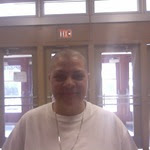Does Where You Sit Make A Difference
I spend a lot of time in different rooms in different schools. I see many different ways to arrange desks. (Pictures are representative and not actual rooms mentioned)
There is the standard arraignment of desks in a row. (Why is that considered standard?)
This is a great way for every student to be able to see the chalkboard. (yep chalk) The teacher in this room does like to use direct instruction a lot, but she will also ask the students to move into groups of four at least once a week. When working in the room I often stand in the doorway and watch the students. The teacher is forced to work at the board at the far corner and I think sometimes the students at the back of the room are don’t feel like part of the class.
Then there is the arraignment of groups of four desks.
In most rooms this feels crowded, but it does allow students to work together, which is what our math curriculum requires most of the time. Some students need to be situated so that they face the teacher most of the time. Group work in classrooms with this arraignment can sometimes be hampered by uneven desks.
Two classrooms have tables, which kind of limits the possibilities, but makes group work a lot easier.
For some reason rooms with tables just seem to be more open than rooms with groups of desks. In either case I find it interesting the most of the time the groups of desks and tables are still set up in rows. As opposed to the one room where I took a picture and the groups of desks were almost randomly placed. I think the difference is that in that room the teacher was teaching in learning centers thus she was sitting at one of the groups as opposed to teaching at a board. She really didn’t need to set up the groups to be able to see the board.
Finally, there is an arraignment of four straight rows across.
This is a unique arraignment in that the movement is across the room instead of forward and back. It is very difficult to walk from the front of the room to the back, but feels different. Interestingly enough the Promethean board is the side of the room, but the walkways lead to and from the board. This room does seem to allow students to work in pairs easily while limiting cross talk between teams.
The other truly unique room arraignment is the English teacher who has rows of desks, but also has a couple of couches in a lounge area and some tables along the side.
In almost every room the teacher’s desk is either in the corner right next to the front door or in the corner directly across from it. Of course that includes ¾ of the corners of the room so perhaps that isn’t very significant. Many rooms have two teacher’s desks. One desk for a Special Ed or paraprofessional who may be in the room for at least one period a day and one for the classroom teacher. Most of the rooms just feel crowded to me, but very few classrooms I’ve been in anywhere have actually felt roomy.
All the rooms I work in have between 1 and 4 computers. Used mostly for teacher record keeping. One room has a Promethean board, new this year.
I know several teachers who use projectors, some who use student clickers, but other than that I don’t know of much technology use in our district. Is that because the computers aren’t there or is it because the teachers don’t know the possibilities? There is this book in the teacher’s lounge at one school.
Our district does have a very strong Special Ed. program. Our Special Ed. program has a long and very high-quality reputation. Some students with very severe disabilities learn in their own classrooms with all the special equipment they need to be successful. While most districts in the county would send these students to a separate school, we keep them in school.
Many years ago when I first started teaching 4th grade I put my students in rows. We would move desks to create groups, but that got noisy. Eventually, I compromised and made rows of pairs. Later I moved to a room with tables, (and 8th graders). As a teacher I preferred tables. I thought they forced students to work in groups and once they learned that skill teaching became so much easier.
When I had tables I had assigned seating, which I changed about once a month. I considered: Who could work without talking. Who was at comparable learning levels, I didn’t want too much difference, but I wanted a range. I sometimes considered learning styles. I considered who was sitting in what seat so they would be facing me when I was at the projector. Finally I even considered the angle of the tables so students could take notes.
As a prospective supervisor I find the rows of seat to be conducive to finding and spotting off task behavior. Which is great if I want to find a gotcha against the teacher. What I would really like to see is learning.
I don’t mind seeing the rows of students, but I would also like to see students move around the room. What I’ve learned about education is that sitting in one place for a long period of time is difficult. It’s difficult for me, its difficult for students. That means seating arraignments need to be fluid. It that sense tables can actually be less conducive to learning than individual seats. What would be the best solution, certainly not the only, in my mind would be tennis balls on the bottoms of the desks. Movement becomes faster, easier, and quieter.







Comments